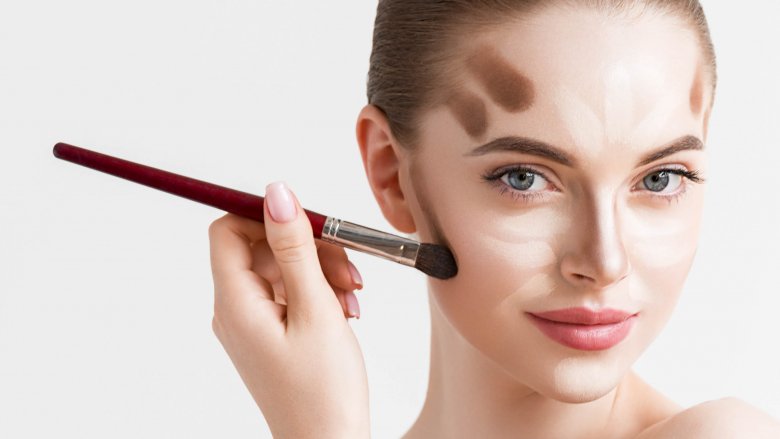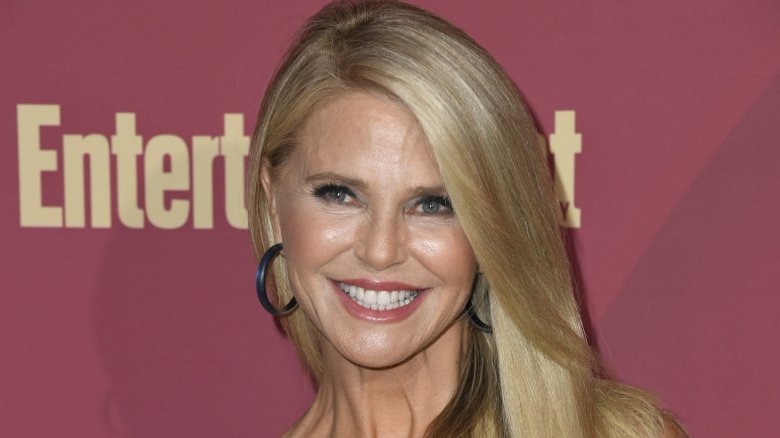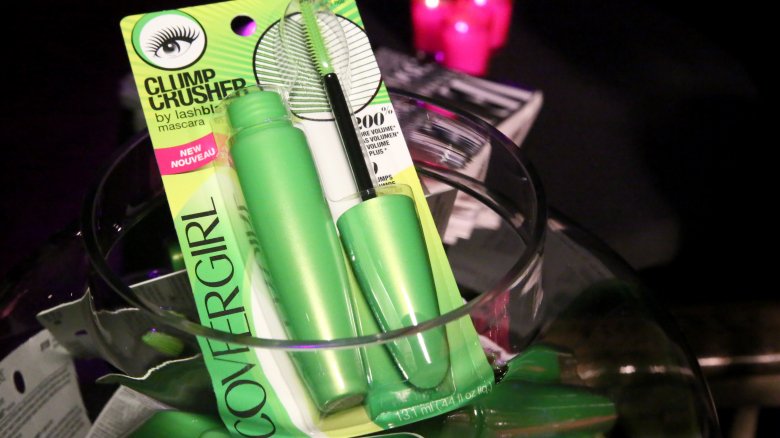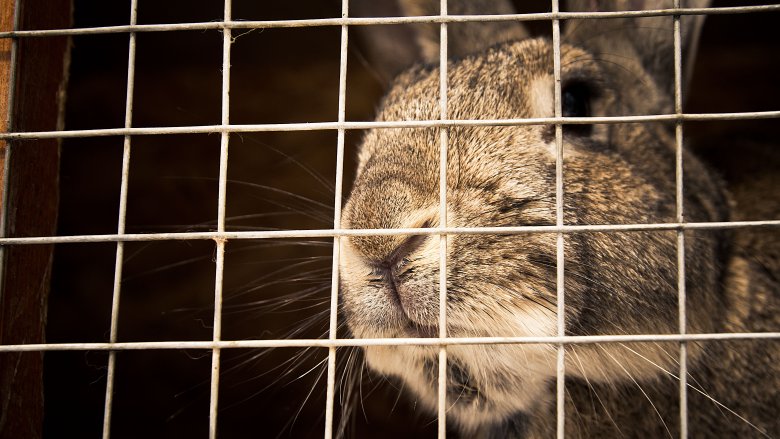Cover Girl Continues Wear Fondation 940
The Untold Truth Of CoverGirl
CoverGirl is positively iconic, and you even don't have to wear makeup to know that. CoverGirlis a household name, after all. The cosmetics company is one of the most well known in the world, and even those who aren't makeup gurus are probably familiar with the brand. CoverGirl has long been known for using famous models, actors, and other pop culture figures to represent the cosmetics line, but there is so much more to the company than gorgeous celebs and quality, affordable makeup.
If you think that you know everything there is to know about CoverGirl, think again. CoverGirl has a long and fascinating history that will be surprising even to those who consider themselves to be true CoverGirl aficionados. From the brand's early years to its continued impact on the beauty industry, to the possible future of the company, here's everything about CoverGirl that every beauty lover should know.
CoverGirl was originally a small line of medicated makeup products
When CoverGirl first started out, the company wasn't planning on launching a massive makeup line that would become one of the best known in the world. According to Cosmetics and Skin, the company rolled out with a handful of medicated makeup products. First launched in 1961, the first CoverGirl products contained the bactericides methylparahydroxybenzoate, propylparahydroxybenzoate and hexachlorophene. The company claimed that these products were "really good for the skin" and "better than not using make-up at all" as these bactericides were thought to fight off pimples and skin blemishes.
According to The American Beauty Industry Encyclopedia, the earliest CoverGirl products included liquid and pressed powder foundations, tube makeup, and "brush-on blushes." It launched with just three shades of foundation, catering to lighter skin tones. The company has certainly come a long way since those early years and now boasts a host of other beauty products including mascara, eye shadow, and eyeliner.
You might recognize CoverGirl's parent company from this beauty staple
When CoverGirl was launched, it wasn't as part of an independent cosmetics line. Instead, it was part of the Noxzema Chemical Company. Today, the name Noxzema is mostly recognized for Noxzema Skin Cream, a medicine cabinet staple for more than half a century. According to Byrdie, Noxzema was developed in the early 20th century as a sunburn remedy. It was later found to also help alleviate itchy skin and eczema, helping to ensure that it reached mainstream success.
By the 1950s, Noxzema Skin Cream was being sold as a cleanser and cold cream, and it became a part of the nighttime skincare routines of countless people. In the 21st century, Noxzema is still a budget beauty must-have that is widely used, although it's considered to be a bit old-fashioned these days. Even if you don't use the product yourself, though, you are still likely to find a bottle of the drugstore cold cream on your mother's nightstand.
CoverGirl helped popularize contouring in the 1960s
While many people often think of contouring as a modern beauty trend, it actually has deep roots. Contouring has long been used in the theater, and, as a mainstream beauty style, it was popularized by CoverGirl in the 1960s. CoverGirl actually used contouring as a marketing tactic. According to a 1964 CoverGirl ad (via Cosmetics and Skin), people were encouraged to buy more than one shade of CoverGirl products in order to contour (and, of course, increase CoverGirl's sales). People were encouraged to "use lighter shades to accentuate or bring forward features that need emphasizing" and to "use darker shades for contrast or to diminish features that may appear too prominent."
Some of CoverGirl's contouring recommendations included "blend[ing] a light shade of foundation over the jawline from ear to chin" to conceal a receding chin, and "apply[ing] darker base over the tip only" to make a long nose seem smaller.
The CoverGirl brand was initially marketed to girls and young women
CoverGirl was determined to be cost-efficient from the very beginning, according to Cosmetics and Skin. In its early years, it deliberately targeted girls and young women, keeping the price point low and selling the products in drugstores and grocery stores where young, savvy shoppers were the most likely to buy cosmetics.
Beginning in 1962, CoverGirl began running the Co-Ed High School Cover Girl Contest which encouraged teenage girls to apply. Prizes included posing for the magazine Co-Ed, a year's supply of CoverGirl makeup, and a $100 U.S. savings bond. Although the schoolgirls who entered and won the contest were not exactly the glamorous models who would soon become the face of the company, they helped CoverGirl market the brand to adolescents and young adults. Featuring high school students also helped CoverGirl cultivate a youthful, wholesome image for its brand.
The first CoverGirl spokesperson was just 15
According to Cosmetics and Skin, CoverGirl helped give rise to the era of the supermodel by appointing celebrities as its spokespeople. While doing this is commonplace today, CoverGirl was the first brand to widely use models in its ad campaigns, thereby causing some of the models' careers to skyrocket, as it made them more popular than they had ever been before. The very first CoverGirl spokesperson was teenage model Jennifer O'Neill. O'Neill became the face of the company in 1963 (via E! News). According to O'Neill's IMDb page, she was born on Feb. 20, 1948, making her just 15 years old when her debut CoverGirl ad launched.
While she's no longer with CoverGirl, O'Neill still seems to be active in the entertainment industry, although she hasn't had an acting credit since 2016 when she appeared in the film I'm Not Ashamed. According to The Christian Post, O'Neill is also an author and an activist.
Some pretty big names have been CoverGirl spokesmodels
CoverGirl has boasted some pretty big names as its spokesmodels. Following Jennifer O'Neill's debut as the first CoverGirl in 1963, other high profile spokeswomen have included U.S. gymnasts Shawn Johnson, Nastia Liukin, and Alicia Sacramone, as well as celebrities Drew Barrymore, Queen Latifah, Cheryl Tiegs, Rachel Hunter, Niki Taylor, and Molly Sims.
CoverGirl doesn't just look for beautiful celebrities to represent their brand. They also expect their spokespeople to embody characteristics that the company values. When Johnson, Liukin, and Sacramone were appointed as CoverGirl spokesmodels in 2008, vice president and general manager of CoverGirl Cosmetics in North America Esi Eggleston Bracey revealed the qualities they had that made them CoverGirl material. "Shawn, Nastia and Alicia are wonderful additions to the CoverGirl family, representing CoverGirl ideals of both inner and outer beauty," Bracey said in a press release (via Investor Village). "We want to honor their confidence and help them shine in the spotlight. We are thrilled they are lending their beautiful faces to CoverGirl."
CoverGirl was the first major cosmetics company to sign a black woman
Even though CoverGirl originally only offered products in lighter shades, the cosmetics company would eventually become a champion of diversity. In 1992, model Lana Ogilvie became not just the first woman of color to land a CoverGirl contract (viaEssence) but, according to BET, she was also the first black woman to represent a "non-ethnic cosmetics company." Ogilvie opened the door for black CoverGirls, and other black women soon joined the CoverGirl ranks. Tyra Banks, Rihanna, and Janelle Monae are just some of the other black women who have been named CoverGirls.
CoverGirl has also, of course, expanded their range of shades offered. The brand has many different types of foundations these days and their skin tone offerings differ from product to product. Per their website, CoverGirl's clean powder foundation has just six shades, but their full spectrum matte ambition foundation boasts 20.
CoverGirl Christie Brinkley had the longest running cosmetics contract in the business
Model Christie Brinkley was with CoverGirl for decades, and she's had the beauty industry's longest running cosmetics contract. Brinkley was named the face of CoverGirl in 1976, according toThe American Beauty Industry Encyclopedia, and she continued to be one of CoverGirl's spokesmodels for 25 years, as noted by Byrdie. Her appointment caused a huge rise in CoverGirl's popularity. It's clear that her impact on CoverGirl was massive, as it continues even today.
Brinkley has been around long enough to see the beauty and modeling industries change significantly. "Authenticity is really being appreciated now, more so than when I started my career," the CoverGirl representative told Byrdie in 2018. "It gives us such a colorful prism to see the world through — different viewpoints; personalities; and unexpected, empowering moments. I think that's a really beautiful, exciting thing and a powerful thing for people coming up in the business now. You don't have to feel so stagnant or like you're waiting for an opportunity. You're making it, making opportunities every day. That's huge."
CoverGirl was one of the first major companies to hire a male spokesmodel
In 2016, CoverGirl became one of the first major cosmetic companies to defy gender norms by naming a man as one of their spokesmodels. Makeup artist James Charles, who rose to popularity on Instagram, was named the company's first male CoverGirl or, as Charles prefers to call himself, CoverBoy. "I was shook and didn't believe it at first, [but] when I found out it was a real opportunity, I literally screamed and then cried, I was so excited," Charles told Cosmopolitan.
Just 17 at the time, Charles would soon be joined by other men repping cosmetics companies. His CoverGirl status helped open the door for people of all genders representing beauty brands. In 2017, YouTube beauty guru Manny Gutierrez was named the first Maybelline New York ambassador (per Allure). That same year, another social media makeup artist, Lewys Ball, was signed to represent Rimmel London (viaTeen Vogue).
CoverGirl helped push diversity in the cosmetics industry
CoverGirl has promoted diversity by hiring members of other communities underrepresented in the beauty industry. In 2016, Nura Afia became the brand's first Muslim ambassador. In 2018, model Amy Deanna became the first CoverGirl model to have vitiligo, a condition which, as explained byThe Independent, causes white patches to appear on the skin due to a lack of pigmentation. The condition affects one percent of the world's population, but, until Deanna came along, models with vitiligo hadn't appeared in major ad campaigns.
"Vitiligo awareness is something that is very important to me," Deanna told PeopleStyle. "Being given a platform to do so means so much... At the end of the day I am just like everyone else, I just happen to have spots. It's a part of my identity, but it doesn't define who I am... For there to be so many of us and so little representation, it's truly disheartening. I work with CoverGirl; I'm a black woman; I have vitiligo. That is empowering."
Procter & Gamble acquired CoverGirl in 1989
The Noxzema Chemical Company was eventually renamed as the Noxell Corporation. The Noxell Corporation ran CoverGirl until the late '80s, by which time it had expanded beyond the United States and had broken into the global market, especially in Europe. While sales outside of North America were modest compared to the success CoverGirl saw in the United States and Canada, the line was still bringing in enough money to attract the interest of bigger companies.
In 1988, Noxell was acquired by powerhouse Procter & Gamble. According to Cosmetics and Skin, Procter & Gamble was interested in buying the company because of the wild success of the CoverGirl brand. Procter & Gamble did not have a makeup line among the many brands that it owned at the time and was interested in adding one. The company purchased Noxell Corporation in a $1.3 billion "stock swap deal."
CoverGirl was purchased by another big company in 2015
In 2015, Coty acquired CoverGirl, along with 42 other beauty brands, from Proctor & Gamble in a $15 billion deal, as reported byUSA Today. The transaction made Coty one of the world's largest beauty brands, giving them not just CoverGirl but other major lines like Clairol hair care and Max Factor makeup. Coty already owned quite a few big label brands of its own at the time, including Calvin Klein perfume and Rimmel cosmetics. The acquisition didn't just make Coty one of the world's biggest beauty brands, but also the world's top fragrance brand.
"With the beauty talent from both sides and the fantastic portfolio of world-class brands, we have the opportunity to create a highly focused, pure-play leader and challenger in beauty which can deliver exciting opportunities and benefits for employees, licensors, customers and suppliers," said Bart Becht, Coty's chairman, at the time (via USA Today).
CoverGirl stopped testing on animals in 2018
In 2018, CoverGirl made a big change that made its products more appealing to socially aware consumers. The company made the decision to go cruelty free, announcing that it would no longer be testing products on animals and that CoverGirl products were officially certified by Cruelty-Free International. The organization gave CoverGirl Leaping Bunny certification, a logo added to the company's products that assures buyers that none of the products or ingredients used by CoverGirl (or its suppliers) are tested on animals. "We're delighted to partner with Coty to end cruel and unnecessary animal testing for cosmetics worldwide and have been impressed with the company's passionate commitment," CEO of Cruelty-Free International Michelle Thew said in a press release (via Harper's Bazaar).
She added, "The Leaping Bunny certification of COVERGIRL marks a new milestone in this area as the largest makeup brand to be certified cruelty free after having met our rigorous criteria. It demonstrates how it's possible to be an accessible and innovative brand without inflicting suffering on animals. We hope today's announcement encourages more cosmetics companies to do the right thing."
How much longer can CoverGirl stay in business?
In spite of CoverGirl's seemingly large hold on the cosmetics industry, the brand isn't doing so well and its future may be in danger. In July 2019, shares of Coty plummeted as the company wrote down $3 billion in value of the brands they acquired from Procter & Gamble in 2016 — including CoverGirl. The Motley Fool reported in April 2019 that, according to data from S&P Global Market Intelligence, Coty stock lost 67 percent in value over the previous year as CoverGirl and other Coty-owned brands experienced declining sales due to supply chain disruptions and competition from newer brands, such as Kylie Cosmetics and Nyx.
Coty's four-year restructuring plan has the company feeling optimistic, though. In a call with analysts (via Reuters), Coty's CEO Pierre Laubies said, "If we are able to stabilize our share in this moderately declining category, this will allow Coty to return back to growth."
CoverGirl adopted a brand new slogan in 2017
After Coty acquired CoverGirl, the cosmetics line was rebranded. Its iconic slogan "Easy, Breezy, Beautiful, CoverGirl" was retired and replaced with "I Am What I Make Up." The change came about as CoverGirl wanted to emphasize that beauty standards aren't quite so standard as they have traditionally been and that you don't need makeup to be beautiful.
"In leading the relaunch, we started with the insight that people no longer strive for a singular standard of beauty, but use makeup as a tool for self-expression and personal transformation," SVP of CoverGirl, Ukonwa Ojo, said in an announcement (via Harper's Bazaar). "CoverGirl has always been inclusive and is known for pushing the boundaries of what it means to be beautiful, which means we have a responsibility to elevate how we connect and communicate with people. This is bigger than a new campaign or a tagline. We hope to spark a provocative dialogue that shifts cultural assumptions about when, where, how and why people wear makeup."
Source: https://www.thelist.com/168355/the-untold-truth-of-covergirl/











0 Response to "Cover Girl Continues Wear Fondation 940"
Post a Comment